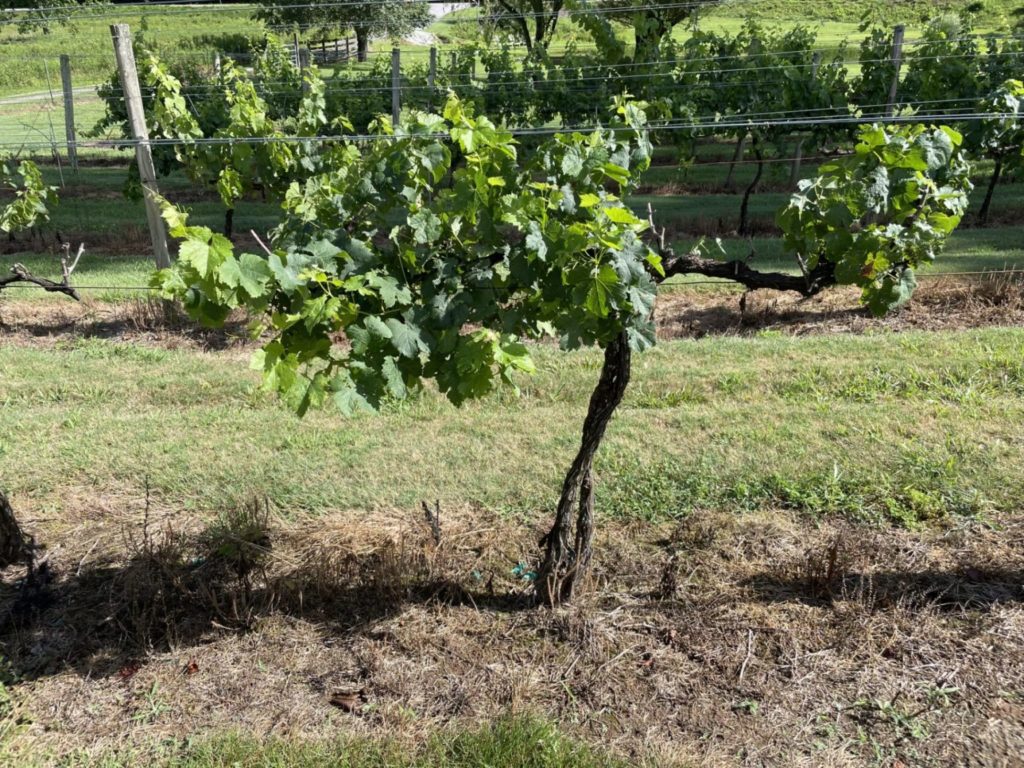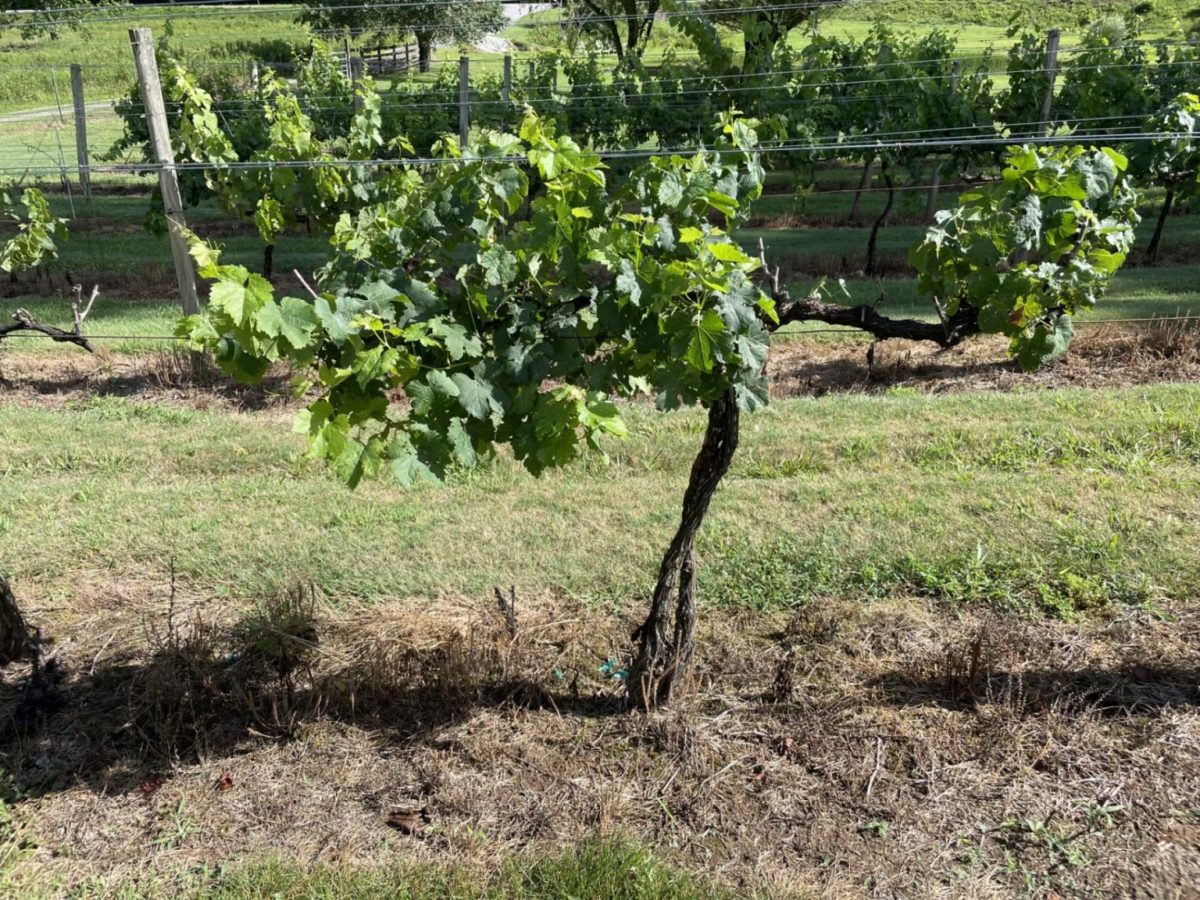By Clint Thompson
Grape pruning is reserved for the winter time, but the process usually begins earlier in the year, says Sarah Lowder, University of Georgia (UGA) viticulture Extension specialist. She noted in the UGA Extension Viticulture Blog that stressed vines can be observed more easily during the summer.

Vines that are not growing well and show symptoms of issues with their trunk need to be marked.
“The later you go in the growing season, sometimes you can see the stress in the vines. Sometimes that can be from trunk disease. That can be some residual cold damage from the winter. There can be a lot of different things going on that you can see the stress more readily,” Lowder said. “The most important thing is to be able to mark those vines that are showing the stress. Once the leaves come off, it can be much harder to figure out which ones are the ones that had the issue. The biggest part is making sure you know which vines are having issues.”
Vine surgery can happen this time of year but depends on various factors like labor availability and risk of potential diseases spreading. Growers should be mindful that any pruning cuts can leave a vine susceptible to a new infection.
“Especially the big pruning wounds can be very susceptible to disease coming in. A lot of these trunk disease pathogens love to get into those big pruning wounds. Those are the ones that require moisture, require rainfall to get in,” Lowder said. “Sometimes using a pruning wound protectant which can be a fungicide applied, painted on, sprayed topically on the pruning wound, can help a lot.”
A protectant like Topsin or Vitiseal can help reduce the risk of infection.










